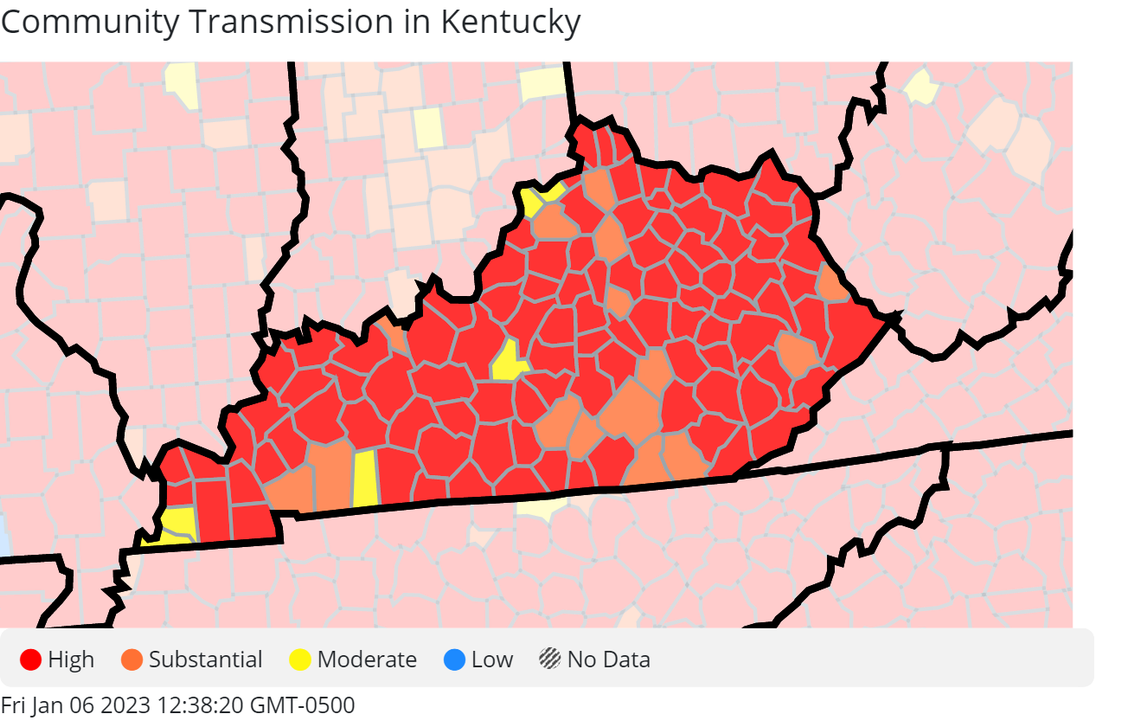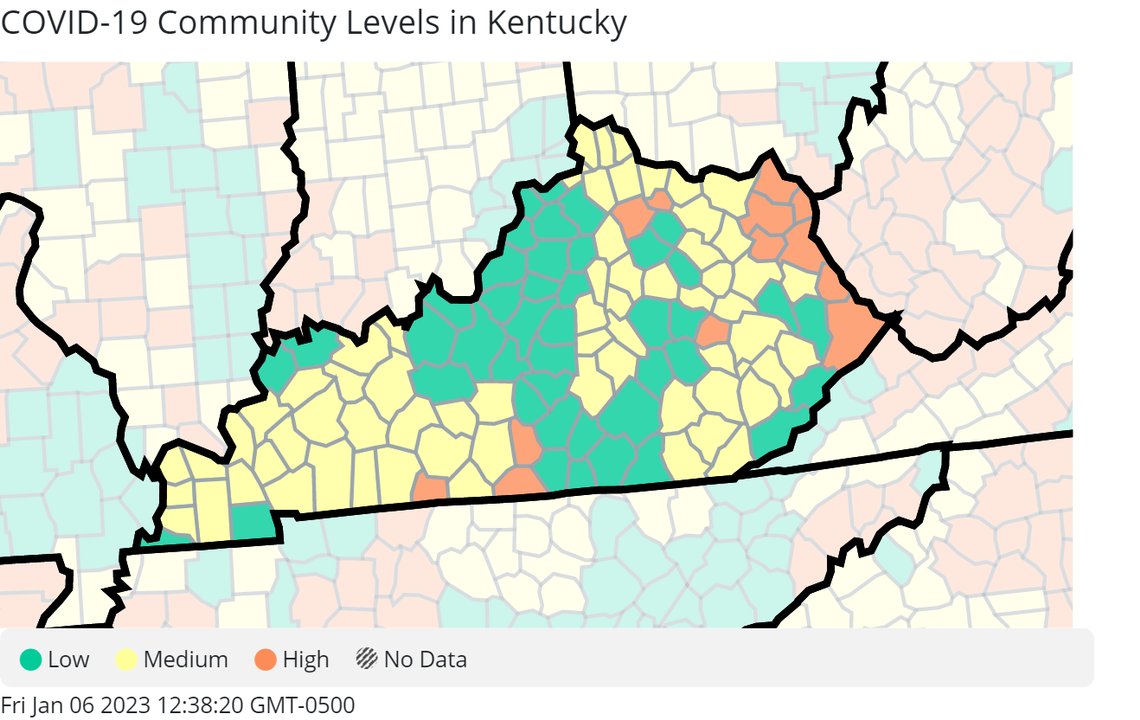Beshear says Kentucky officials are monitoring new omicron subvariant. What to know
Kentucky added 4,732 new COVID-19 cases over the course of last week, according to the latest data from the U.S. Centers for Disease Control and Prevention.
Speaking ahead of the data update from the CDC Thursday, Gov. Andy Beshear said Kentucky is “not seeing significant increases in cases or hospitalizations.”
However, Beshear did acknowledge increasing COVID-19 activity nationwide and warned of a concerning, new omicron subvariant: XBB.1.5.
Here’s what to know about the latest coronavirus strain and a look at where Kentucky currently stands as it begins year four of the COVID-19 pandemic.
What to know about new omicron subvariant
The new XBB.1.5 coronavirus strain is the most-transmissible variant yet, and according to the CDC, is spreading faster in the Northeast than any other part of the country.
There’s no indication the new variant — itself a fusion of two highly transmissible omicron strains — is making people sicker, according to the World Health Organization. Still, the rate at which XBB.1.5 is spreading is worrying public health leaders.
Beshear called the new strain “the biggest thing we are watching” and one that’s quickly becoming the new dominant variety in the U.S.
“We don’t know a lot about it other than it is even more contagious than the last omicron variant, which means it’s one of the most contagious viruses in the history of planet Earth, or at least in our lifetime,” the governor said.
“We don’t know yet whether it’ll cause more or less serious disease,” Beshear added. “So it’s important for folks who have not gotten their newest booster to go get it. This new booster provides protection against omicron and has provided good protection against all of the omicron variants. Does it mean that it will shield you from getting COVID? Not always, but it certainly makes … any health impacts much, much, much less severe.”
At this time, fewer than 12% of Kentucky residents ages 5 and older have received the updated version of the booster, Beshear added.
Where does Kentucky stand with COVID-19?
The latest update from the CDC, current as of Thursday, shows Kentucky added 4,732 new cases over the previous seven-day period. That’s 756 more cases over the previous week’s 3,976.
Kentucky’s positivity rate continues to hover between 10 and 14.9%, and in the majority of counties, transmission of the virus remains at high or substantial levels of spread, according to CDC data.

There were 27 new deaths during the reporting week, bringing Kentucky’s coronavirus death toll since the start of the pandemic to 17,697.
Slightly fewer Kentucky counties are experiencing high COVID-19 community levels compared to the previous reporting period, though more are at medium levels.
According to the latest CDC data, there are 13 counties experiencing high community levels, while 64 counties are at medium. The remaining 43 counties are experiencing low COVID-19 community levels.
The 13 counties at high are Boyd, Carter, Elliott, Greenup, Harrison, Lawrence, Lee, Martin, Metcalfe, Monroe, Pike, Robertson and Simpson.
Fayette County rests at the medium COVID-19 community level.

The CDC’s community levels are derived from several metrics, including weekly totals for new cases and hospital admissions for the disease and the percentage of inpatient beds taken up by those patients, a seven-day average.
According to CDC guidance, people in counties at high should pivot to wearing masks indoors when in public, and if they’re vulnerable for severe COVID-19, consider limiting public activities where they could be exposed.
To find a vaccine provider near you, visit vaccines.gov.
Do you have a question about the coronavirus in Kentucky for our service journalism team? We’d like to hear from you. Fill out our Know Your Kentucky form or email ask@herald-leader.com.
